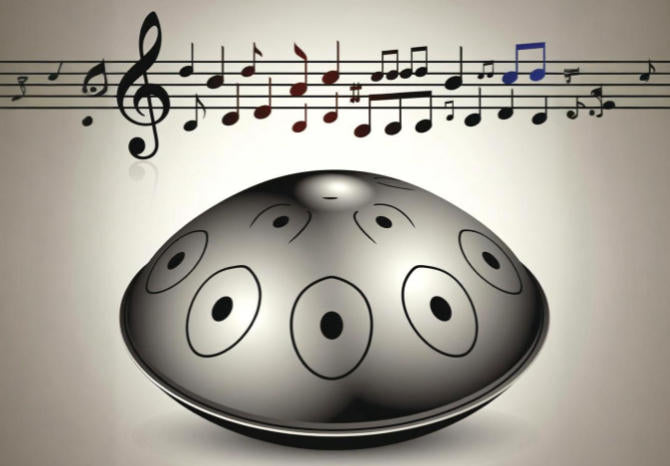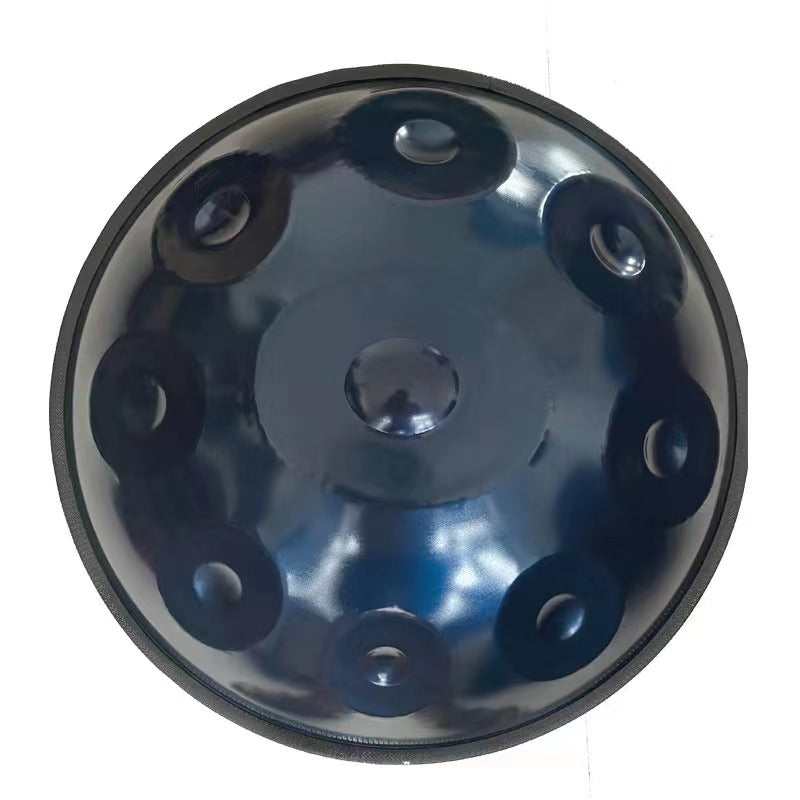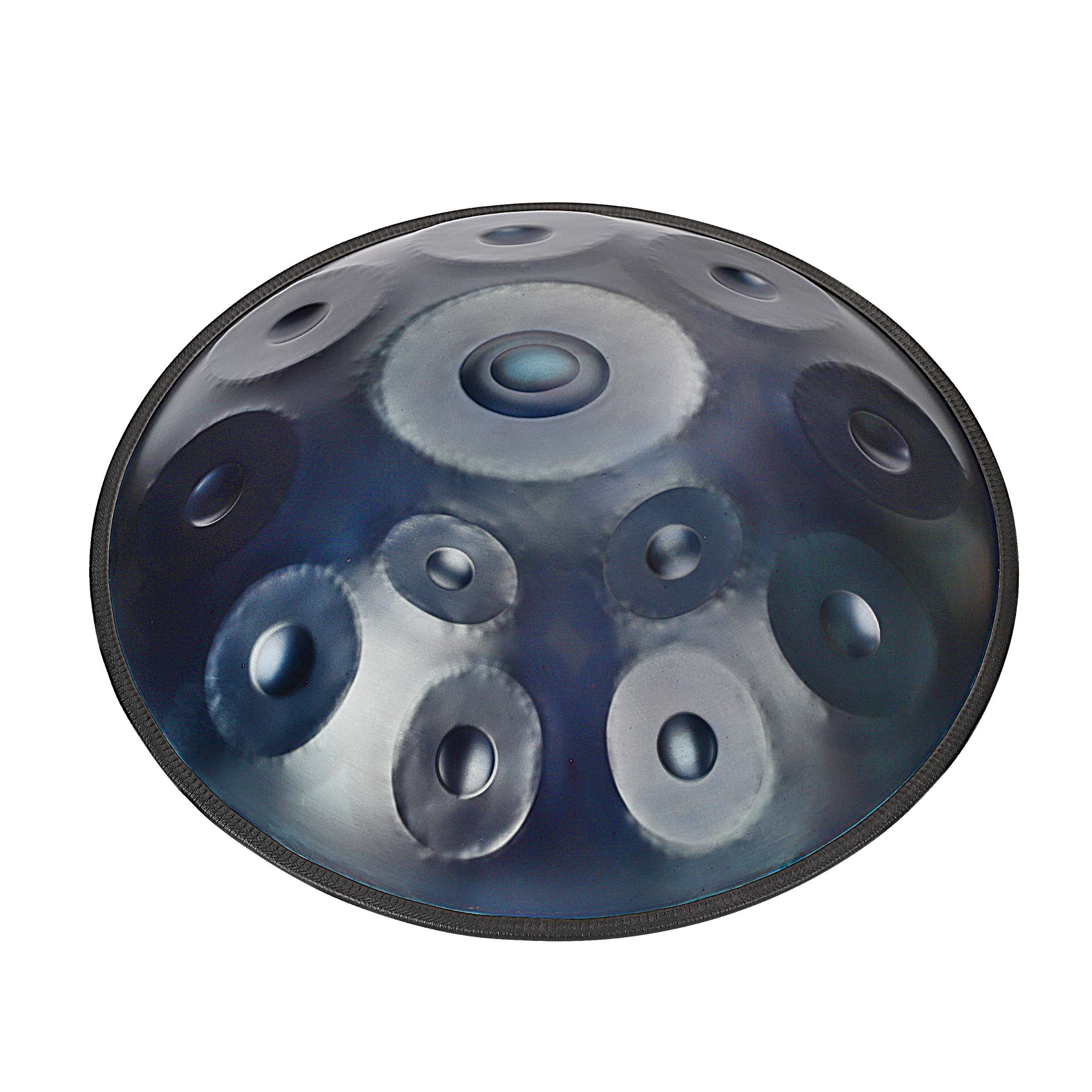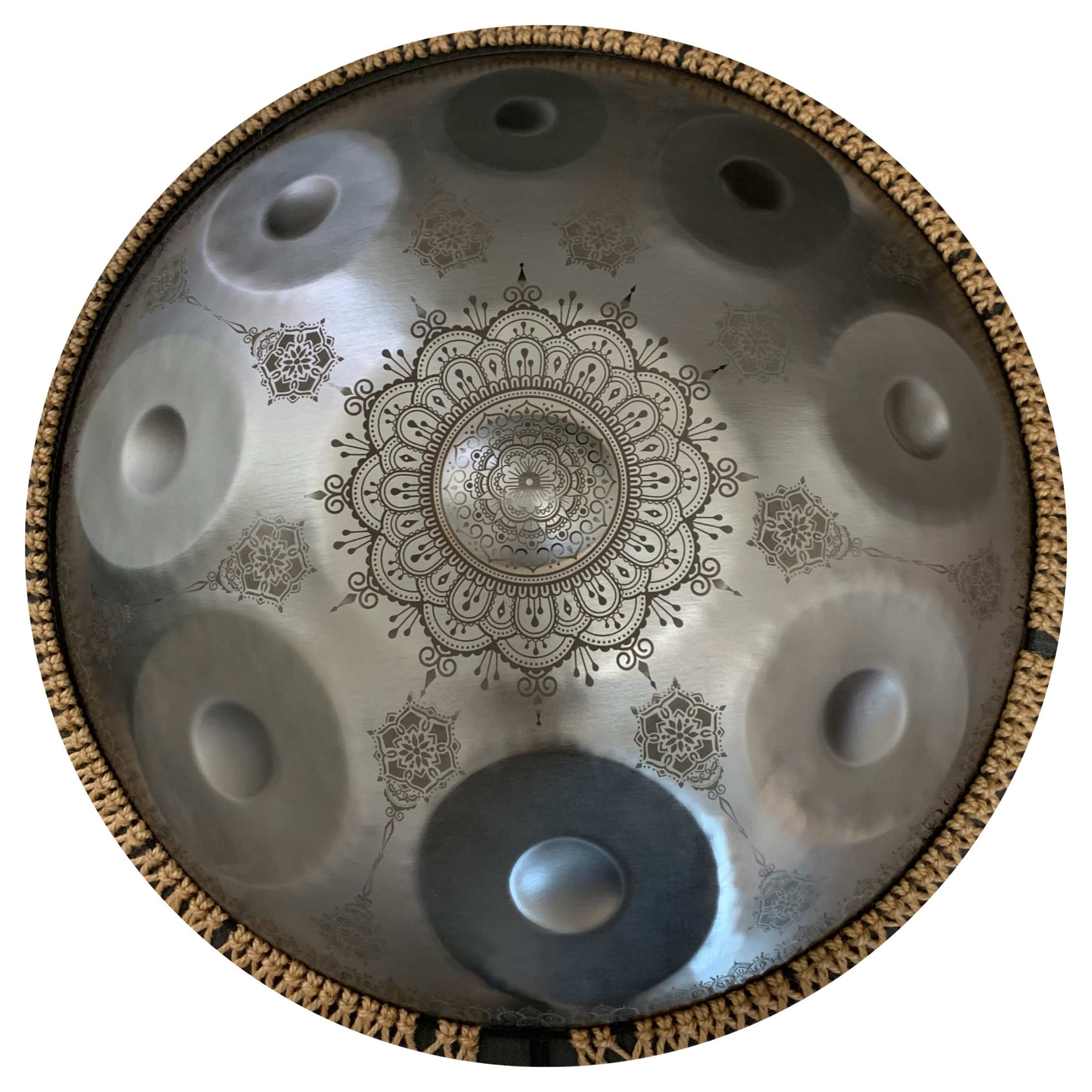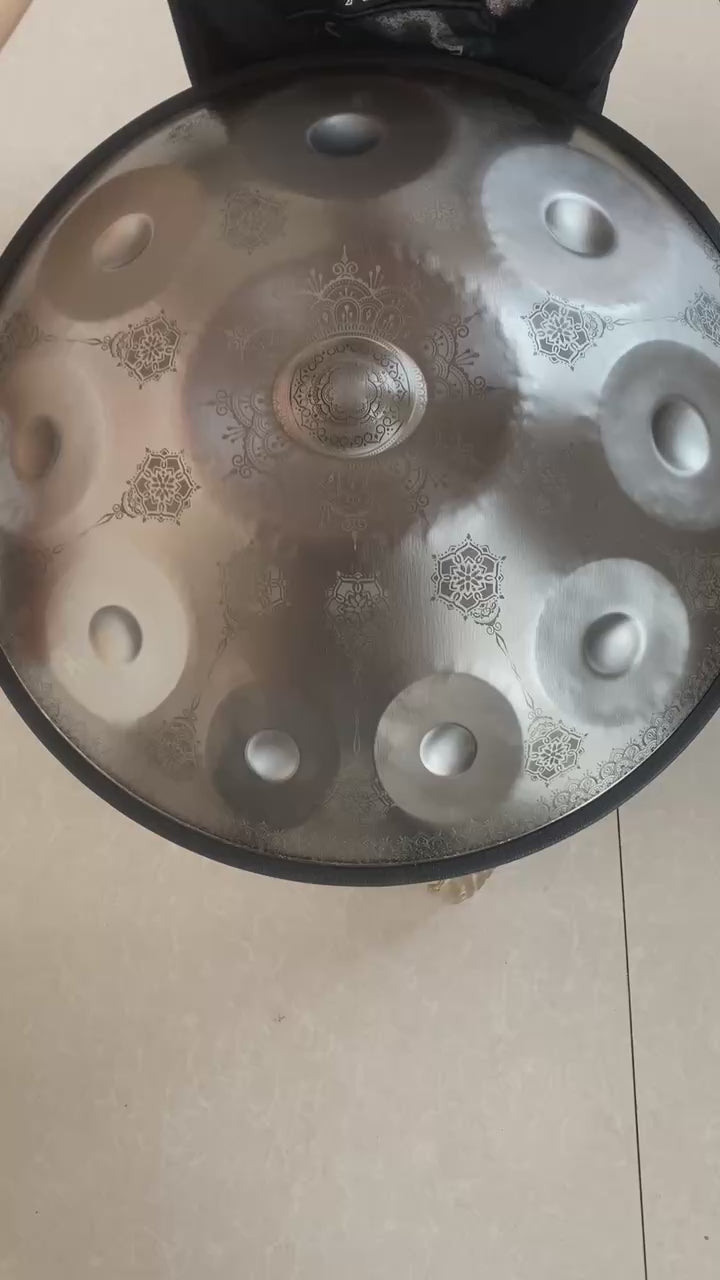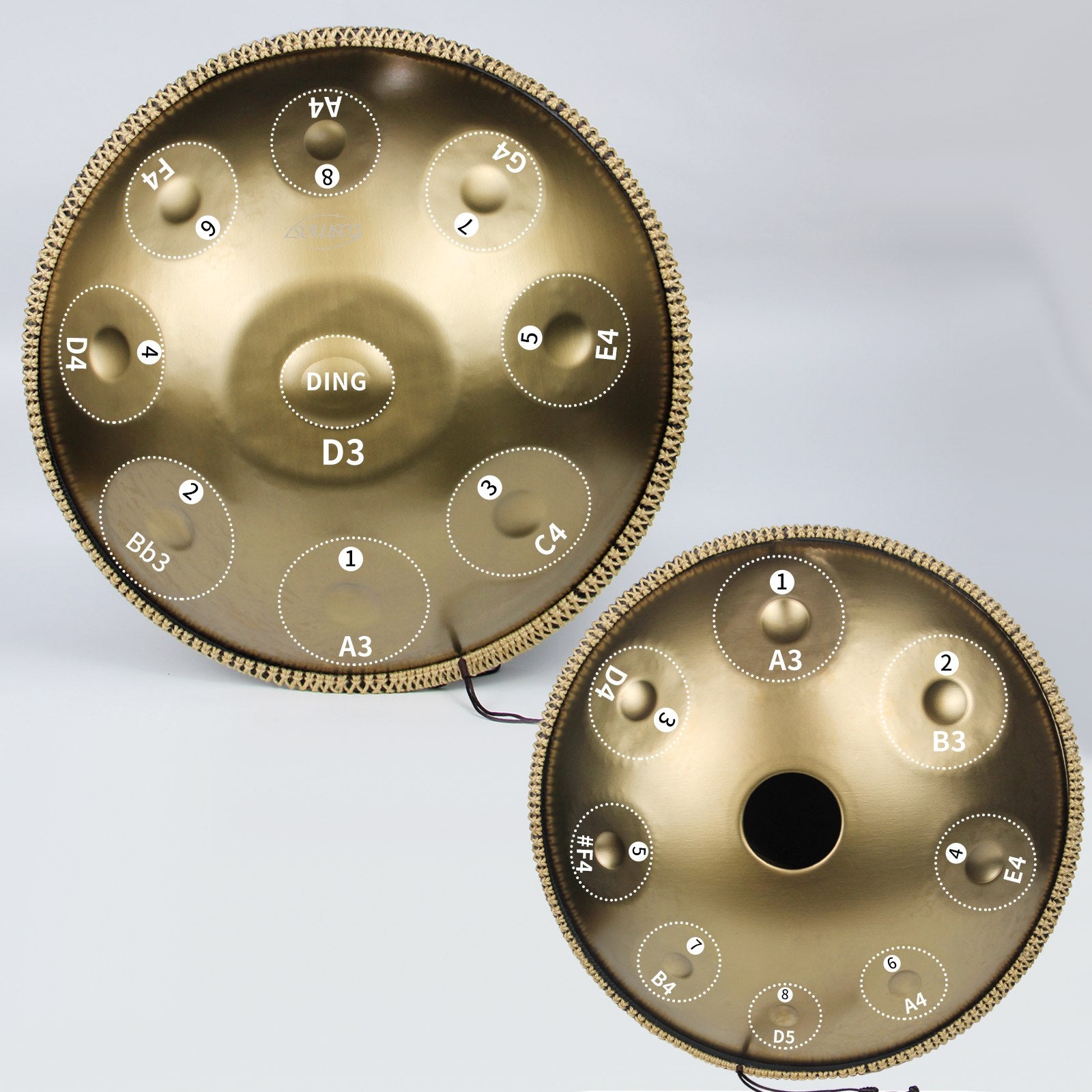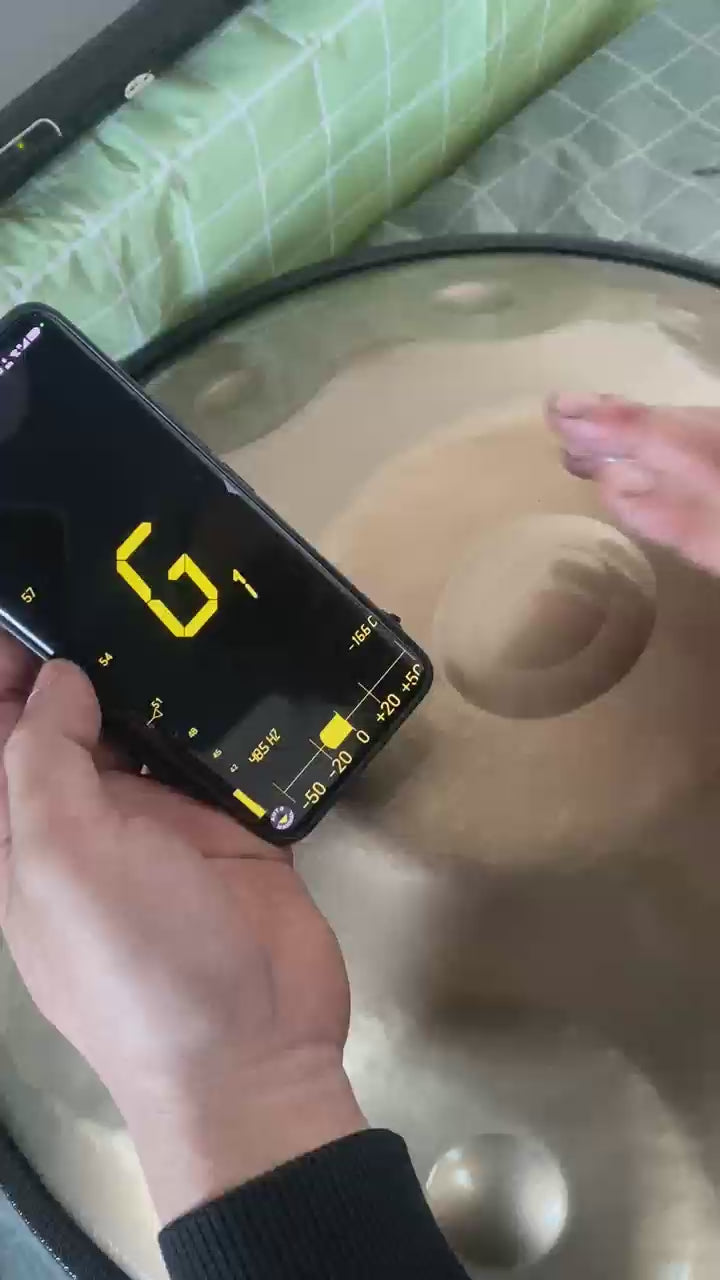Introduction to Handpan Drum Notes
The handpan (also called hang drum or handpan drum) is a modern acoustic instrument loved for its meditative, bell-like timbres and intuitive playing layout. A handpan notes chart is a map of the notes tuned on a particular instrument — essential for learning, composing, and choosing the right scale for your musical goals. This guide explains how to read handpan charts, shows the most common scales with example note sets, and gives practical advice on buying, tuning and playing — including a spotlight on Cosmos Handpans, a Colorado-based maker known for 9–17 note handpans and supportive player resources.

Table of Contents
- How to Read a Handpan Notes Chart
- Typical Handpan Layout & Terminology
- Common Handpan Scales (with example charts)
- How to Choose the Right Scale
- Tuning, Care & Maintenance
- Practical Playing Tips for Each Scale
- Spotlight: Cosmos Handpans
- Buying Guide & What to Ask the Maker
- Summary Table
- FAQs
- References & Further Resources
How to Read a Handpan Notes Chart
A handpan notes chart translates the tuned pitches on a handpan into a readable format. Charts vary by maker, but most include a few standard pieces of information:
- Ding (Center Note) — the central note (usually the instrument’s tonic) is called the ding. The entire scale is arranged around it.
- Surround Notes — the tone fields around the ding are the tuned notes (typically 8–16 notes depending on the instrument).
- Scale Name & Root — most charts list the scale name (e.g., D Minor, C Major, Hijaz) and the root pitch (e.g., D3, C4). Some makers use scientific pitch notation; others simply list note names.
- Orientation — many charts show an overhead diagram (top view) with notes labeled clockwise. Others show a linear list from lowest to highest.
What a simple chart looks like
Charts often use a top-down “clock” diagram. Example (conceptual):
1 o'clock: A
3 o'clock: C
5 o'clock: D (octave)
7 o'clock: F
9 o'clock: A
11 o'clock: Bb
Tip: Always verify whether the maker lists octave numbers (e.g., D3 vs D4). Octave designations clarify the instrument’s pitch range and compatibility with other instruments.
Typical Handpan Layout & Terminology
Understanding common terms helps you interpret notes charts quickly:
- Ding: Central note, main tonal center.
- Gu: The bottom hole on some handpans; some makers tune this as a drone note or leave it open.
- Tone fields: The hammered/etched areas that produce each pitch.
- Scale degree notation: Charts sometimes show intervals from the root (1, b3, 5, etc.) rather than absolute note names.
Standard layouts
While variations exist, these patterns recur:
- 8–9 note handpans: Simpler, great for beginners — usually a ding plus 7–8 surrounding notes.
- 10–12 note handpans: Offer more melodic options and alternate chord possibilities.
- 13–17 note handpans: Expanded range, richer harmonic textures — favored by advanced players and composers.
Common Handpan Scales (with example charts)
Below are widely used handpan scales, with an example notes chart for each. These examples are illustrative — exact octave numbers and note order may vary by maker. If you need precise pitch labeling for a specific Cosmos Handpan or other maker, check the maker’s published chart or ask them to confirm octave notation.
1. D Minor (very common — warm, contemplative)
Scale feel: Minor, plaintive, meditative.
2. C Major (bright, open)
Scale feel: Major, uplifting, clear — great for melody and harmony.
3. D Kurd (Dorian-like, modal)
Scale feel: Minor but with a raised 6th — spacious, ancient/folk vibes.
4. Hijaz (Middle-Eastern flavor)
Scale feel: Exotic, dramatic — strong semitone jumps give a distinctive color.
5. Pygmy (ethnic/minimalist)
Scale feel: Pentatonic, earthy — great for drones and rhythm-focused playing.
6. Integral / Bali (rich harmonic overtones)
Scale feel: Lush, resonant — lots of sympathetic harmonics that ring together.
7. Celtic (lilting, modal)
Scale feel: Modal folk — very playable for melodies and companion instruments (guitar, flute).
8. Minor Pentatonic (very player-friendly)
Scale feel: Simple, forgiving — excellent for improvisation and beginners.
Note: These examples show typical note content and relative color. Makers may reorder tone fields for ergonomic reasons; what matters most is the set of available pitches (the inventory), the instrument’s tuning accuracy, and whether it matches your musical intent.
How to Choose the Right Scale for You
Choosing a handpan scale depends on your musical goals and context. Ask yourself:
- What feeling do I want? (calm/minor vs bright/major vs exotic/modal)
- Will I play with others? Pick a scale that complements common instruments (guitar-friendly keys: D, E, C, G).
- Am I a beginner? Pentatonic or simple minor scales are forgiving and fast to learn.
- Do I perform or record? Consider extended-range 12–17 note handpans for complex arrangements.
Common pairing tips
- Guitar/Ukulele: Choose handpans in keys compatible with open chords (D, G, C).
- Flute/Voice: Modal scales like D Kurd or Hijaz work wonderfully with melodic instruments.
- Electronic/Looping: Extended note sets (12–17 notes) give more layering options for live looping artists.
Tuning, Care & Maintenance
Handpans are tuned steel instruments that require careful maintenance. Basic care keeps your notes in tune and prolongs the instrument’s life.
Tuning & Stability
- Initial tuning: Professional makers hand-tune each tone field to precise pitch. Expect small pitch drift at first—called “settling”—during initial weeks of playing.
- Humidity & temperature: Extreme humidity or rapid temperature changes can affect tuning. Store your handpan in a padded case at stable room temperature when not playing.
- Retuning & repairs: If a tone goes flat or dead, a skilled tuner/heater can recalibrate the tone field. Avoid DIY hammering unless you are trained — you can damage the instrument.
Cleaning & Surface Care
- Wipe the surface with a soft, dry cloth after playing to remove oils and sweat.
- Occasional gentle cleaning with a lightly damp cloth is fine; dry immediately.
- Avoid household chemicals — use only maker-recommended products for any rust protection or finish treatment.
Practical Playing Tips for Each Scale
Every scale offers different melodic and rhythmic possibilities. Here are practical approaches to get musical results fast:
Pentatonic / Pygmy
- Focus on simple melodic motifs and rhythmic patterns — these scales are perfect for meditative ostinatos.
- Use open-handed taps and muted slaps for percussive texture.
Minor & Dorian Scales (D Minor, D Kurd)
- Explore bass-to-high voice motion: use the ding as drone while playing melodies on surrounding notes.
- Experiment with double-voice melodies — play two neighboring notes simultaneously for harmonic drones.
Hijaz & Exotic Scales
- Play slower, emphasize the micro-interval leaps and let notes ring to highlight their color.
- Try modal improvisation — keep motifs centered on the scale’s characteristic interval to preserve flavor.
Spotlight: Cosmos Handpans — Craft, Range & Support

Cosmos Handpans (based in Colorado, USA) are built by artisans with over a decade of experience creating handpans and tongue drums. Cosmos emphasizes musicality, quality control, and a strong player-focused approach. Important highlights:
- Craftsmanship: Each instrument undergoes careful tuning and inspection for a balanced, resonant voice.
- Range options: Cosmos offers 9–17 note handpans — suitable for beginners through advanced performers.
- Player support: They provide resources and personalized guidance to help players get the most from their instrument.
- Sound philosophy: Cosmos instruments aim for ethereal, singing overtones with musical stability for performance and recording.
If you’re considering a Cosmos handpan, ask for a detailed notes chart that includes the ding pitch and octave numbers — this makes it easy to match the instrument with other musicians or to plan compositions.
Buying Guide — What to Ask & Look For
When buying a handpan (new or used), request clear answers to these questions:
- Exact notes chart: Does the maker provide a labeled chart with note names and octave numbers?
- Tuning reference: Which reference pitch (A=440Hz or other) was used?
- Number of notes & range: How many notes and what lowest/highest pitch?
- Warranty and aftercare: What’s covered and how to get retuning if necessary?
- Case & accessories: Does the kit include a padded case, maintenance kit, or humidity protection?
- Play test or demo recording: Can you hear or play the exact instrument before purchase?
Summary Table — Quick Reference
| Topic | Key Takeaway |
|---|---|
| Reading charts | Look for ding (tonic), surrounding notes, and octave markings — confirm with maker if unclear. |
| Common scales | D Minor, C Major, D Kurd, Hijaz, Pentatonic, Integral/Bali, Celtic, Pygmy — each offers distinct moods. |
| Layout | Notes arranged around the ding; 9–17 notes common. Order varies by maker for ergonomics. |
| Choosing a scale | Match scale to musical goals: pentatonic for beginners, modal for world/folk, extended sets for composers. |
| Care | Stable storage, gentle cleaning, professional retuning when needed — avoid DIY hammering. |
| Cosmos Handpans | Colorado-based maker, 9–17 note options, strong player support and careful quality control. |
Frequently Asked Questions (FAQs)
Q1: What is the “ding” on a handpan?
The ding is the central tone field, usually tuned to the instrument’s tonic (root). It’s the primary pitch and reference for the rest of the scale.
Q2: Do handpans come in standard tunings?
There is no single standard, but common keys and scales (D minor, C major, various modal scales) recur across makers. Always check the maker’s notes chart for exact pitch and octave.
Q3: How many notes should a beginner get?
9–10 note handpans are ideal for beginners — they’re simpler to learn and still musically satisfying. 12–17 note instruments give more options as you advance.
Q4: Can I play handpan with other instruments?
Yes. Choose a handpan key that complements other instruments. For example, D or G handpans often pair well with guitar and flute.
Q5: How do I tune my handpan?
Tuning a handpan requires a specialist. If a note goes out of tune, contact the maker or a professional tuner — do not attempt hammering or heat treatment without expertise.

